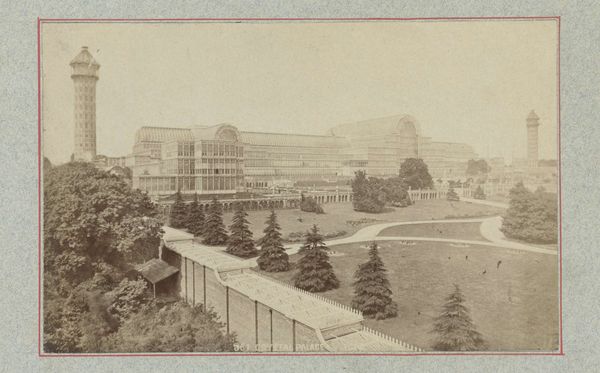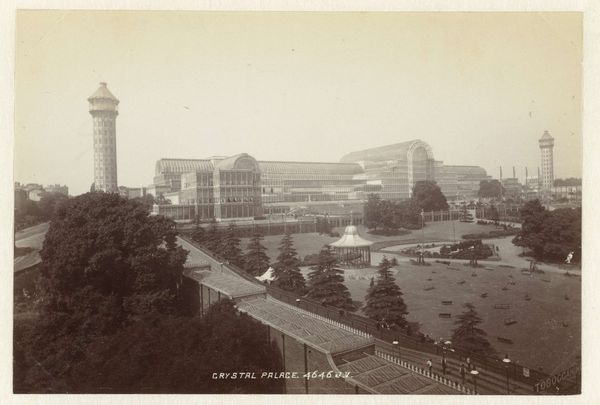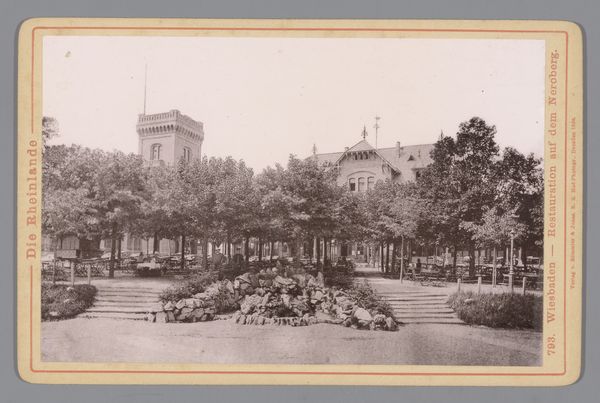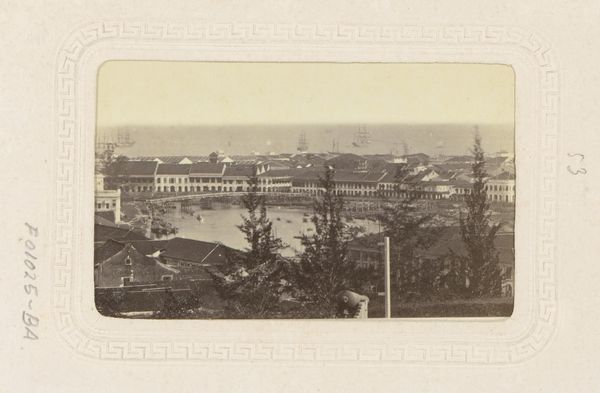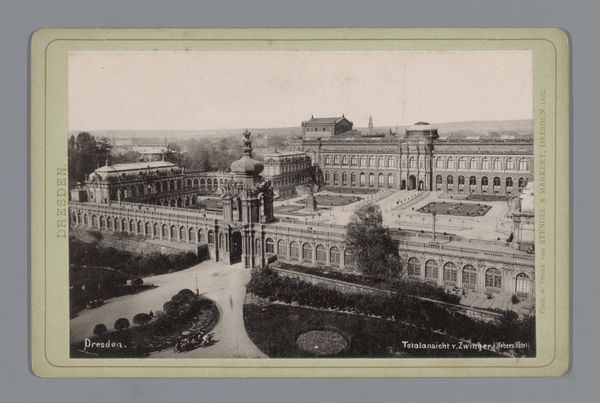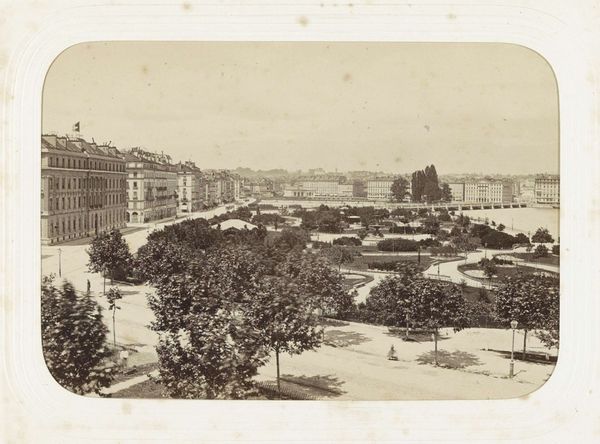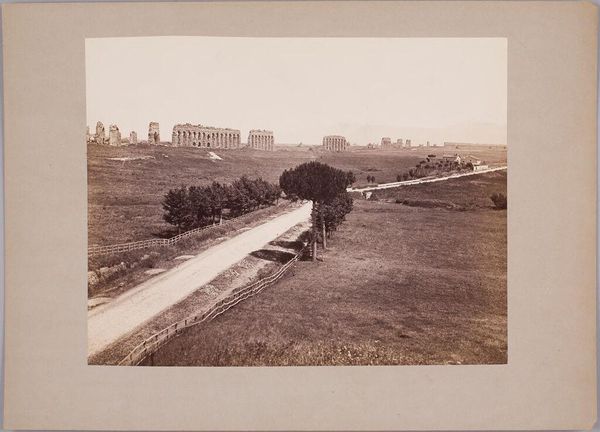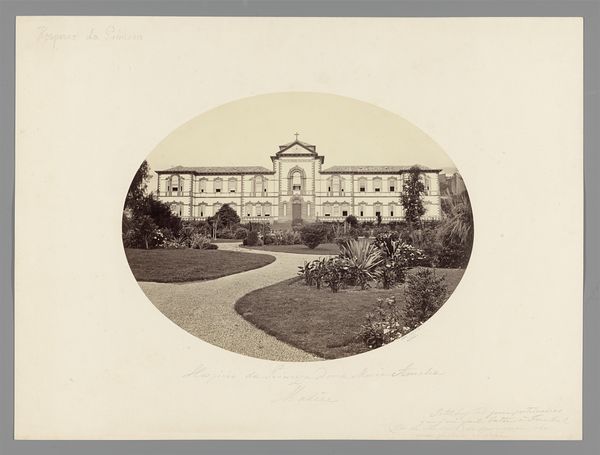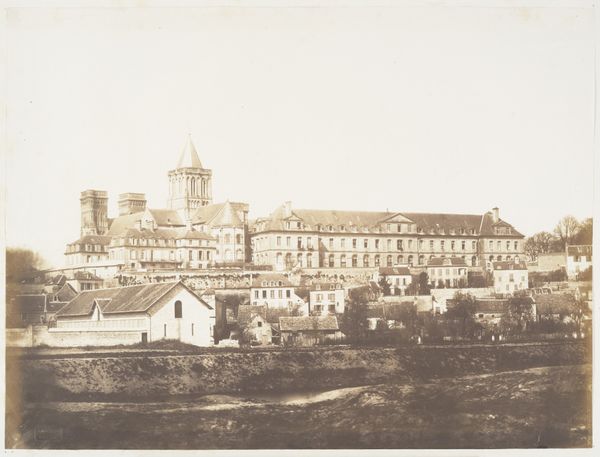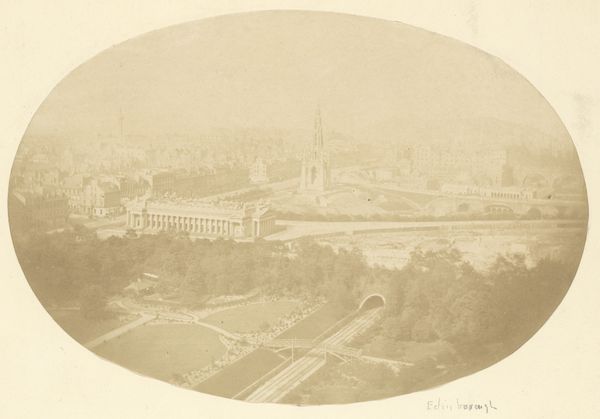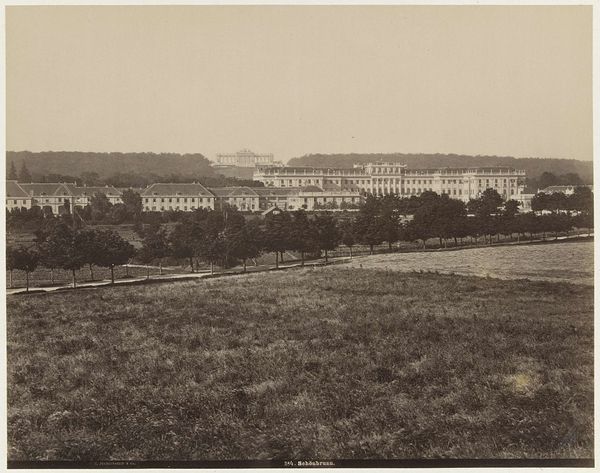
photography, albumen-print, architecture
#
pictorialism
#
landscape
#
outdoor photograph
#
outdoor photography
#
photography
#
historical photography
#
cityscape
#
albumen-print
#
architecture
Dimensions: height 213 mm, width 280 mm, height 335 mm, width 422 mm
Copyright: Rijks Museum: Open Domain
Curator: Today we're looking at "Het Crystal Palace bij Sydenham," a work by Francis Godolphin Osbourne Stuart, created sometime between 1880 and 1910. The work, created via photography, is an albumen print, an early method of photography that renders this scene with a stunning tonal range. Editor: My first impression is one of wistful grandeur. The sepia tones evoke a bygone era, and the architecture itself is monumental, yet there's a subtle softness to the image, especially in the rendering of the sky. The structure of the composition also gives off feelings of precision and order. Curator: It's quite remarkable to consider what the Crystal Palace represented during its time: a symbol of British industrial power and colonial reach, especially given the building’s original construction to house the Great Exhibition of 1851, and, one must not forget, using wealth and resources accrued via imperial violence. Stuart’s photographic approach invites us to think about how identity and progress were intimately linked to class and empire during the late 19th century. Editor: Indeed. Shifting to the aesthetic qualities, let’s consider the meticulous composition. Notice how the receding lines of the garden paths and the strong horizontal emphasis of the palace itself create a sense of depth and perspective. There is also the strong geometrical relation of forms that guides our viewing process. This is cleverly juxtaposed with the softening effect of Pictorialism which really emphasizes the contrasts. Curator: Precisely. And while it may be viewed today as simple “outdoor photography” this representation has heavy ties with the construction of what can be viewed and what is worth viewing during the expansion of cities that occurred due to industrialism. As such, it speaks to issues of representation of history, industrialism, power, and place that all relate to each other. Editor: The success of albumen printing is also paramount; observe the balance and gradations present, rendering great textural clarity across a singular tonal scheme. Curator: Ultimately, it is works like these that challenge us to engage with both the artistic representation and the intricate cultural, historical, and sociological narratives embedded within its visual framework. Editor: I concur, reflecting on it, it also showcases photography's unique capacity to articulate the passage of time and light and our understanding of material objects.
Comments
No comments
Be the first to comment and join the conversation on the ultimate creative platform.
